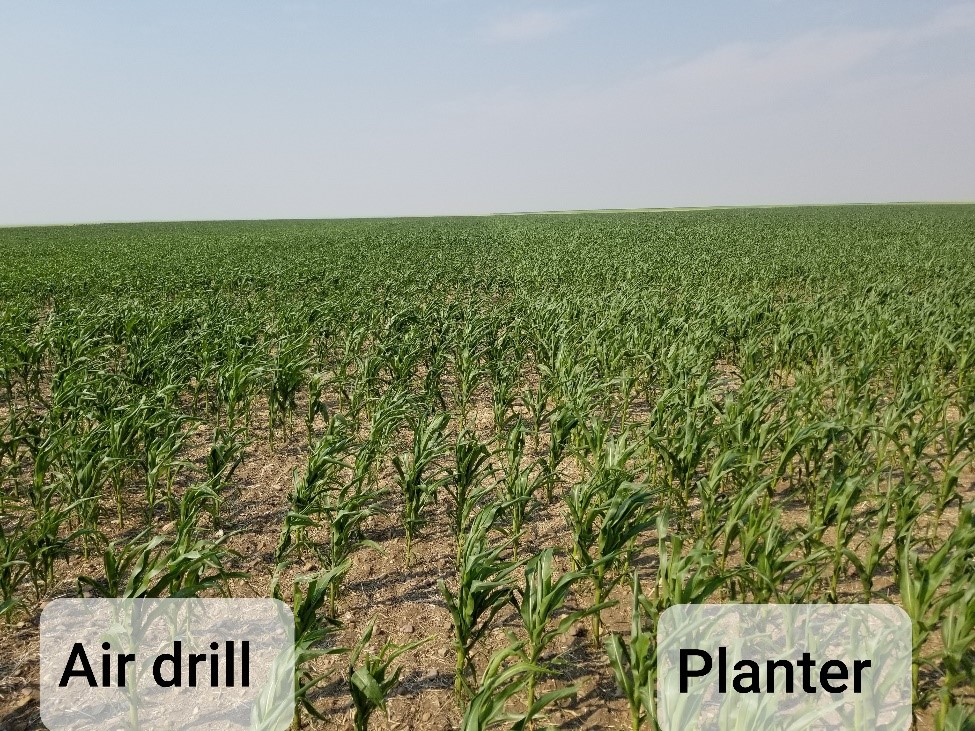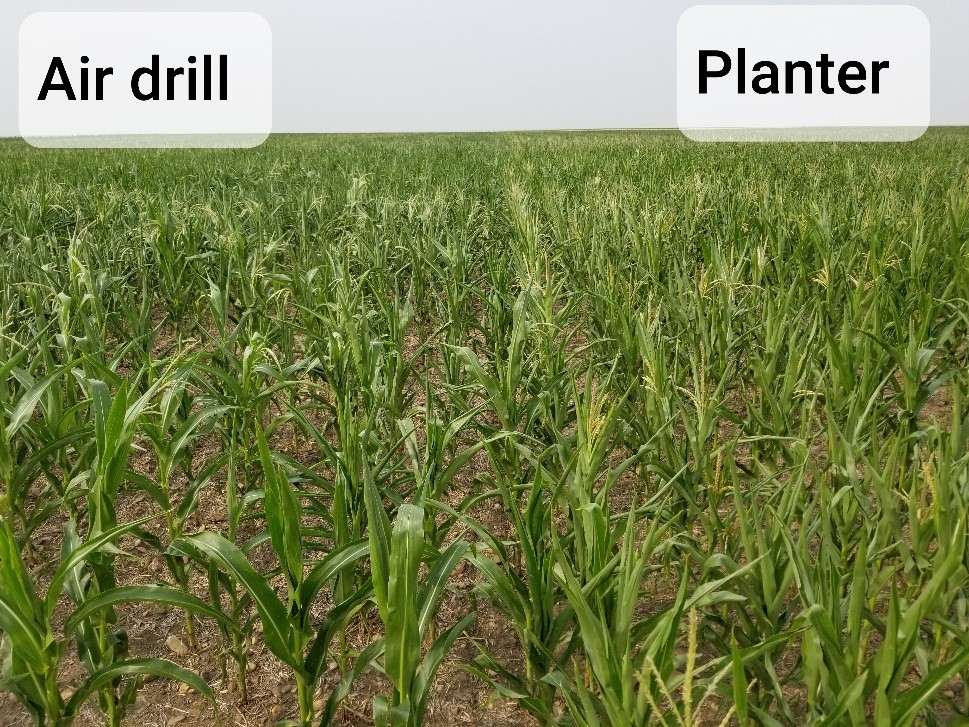Planter vs Air Drill: The Western Showdown
October 8, 2021 | Category: Agronomy |For a number of years, I have been planting my dryland grazing corn with my air drill because that is the equipment that I had available, and I didn’t know if spending the money on a custom planter would be worth it. My ‘target’ plant population with the air drill was 32,000 plants per acre (ppa) because I knew that I didn’t really want to go any higher than that, but I could never really tell what I was putting down. This year I had a friend who decided to give custom planting a try, so I decided that it was a great time to compare the two systems.
| Equipment | Spacing | Variety | Target PPA | Plant Count |
| 1994 John Deere Max Emerge Planter | 22″ | MS 7420 R | 32,000 | 28,000 |
| 1994 Flexicoil Air Drill | 14″ | MS 7420 R | 32,000 | 21,500 |
I planted a variety trial (May 13) with the planter and beside it put a pass of corn seeded with the air drill (Table 1). There has been a difference in plant stand from the very beginning. Figures 1-3 show the progression of the corn throughout the season and there is a visible difference in plant stand every time. Not only that, but I also observed a delay in tasseling from the air drill pass (Figure 3) – my assumption being that because the air drill doesn’t place the seed as uniformly in regards to depth and spacing the maturity can be affected. Having a delay in tassel/flowering is not ideal, especially living in an area with an average of 2000 CHU. I need my corn to mature as fast as possible and still provide a reasonable yield so that I have some tonnage to graze.



After watching this side-by-side comparison all year, I went out and conducted a silage yield estimate so I would know roughly the yield difference and how that impacts my grazing strategies. If we assume that a cow consumes 45lbs of dry matter (DM) per day, eats approximately 2/3 of the plant, and I lose another 10% of the weight because I won’t graze for another month, then that means the corn planted with the planter not only yielded higher but will provide more cow days/ac.
| Equipment |
Silage yieldestimate MT/ac @65% moisture lbs/ac |
Corn weight at grazing time lbs/ac | Cow days/ac | Cost of feeding/day |
| JD Planter | 10.6 (23,368) | 21,032 | 313 | $0.75 |
| Flexicoil Air Drill | 7.3 (16,094) | 14,485 | 215 | $1/07 |
Seeing this data has made me think twice about continuing to use my air drill. However, if you are planning to still use an air drill to plant corn, I think there are some important key take-aways.
- Achieving your target plant population is more difficult with an air drill – you need to be prepared to seed heavier to reach that target and that costs more.
- To make sure you place your seeds as carefully as possible, maintain a slow speed.
- You should also consider setting the drill a bit deeper than your targeted depth because air drills have a bit more ‘bounce’ to them compared to planters. Having a uniform depth for your seeds will help to maximize your emergence and keep the plants at a similar maturity.
It has been a difficult growing season in western Canada this year with hot temperatures, drought, hail, and wildfire smoke. Because of all these factors, we have also seen an increase in hay prices and a shortage of feed production. Utilizing corn in my rotation allows me to produce more feed for my animals at a more reasonable cost.
Planting corn with the planter has shown that making one small change will increase my yield and cow days/ac. This data is subject to only one year of collection, but shows how valuable small changes can be, especially on challenging production years.
